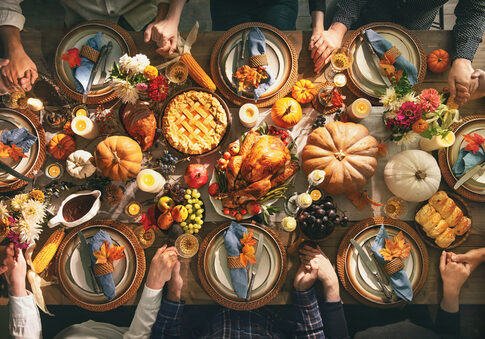Thanksgiving’s iconic turkey, once again, stands at the heart of the American table—but this year, the real question is whether a microscopic virus could pull the chair out from under your holiday feast.
Thanksgiving Traditions Collide with Viral Realities
Every November, Americans consume over 45 million turkeys—a ritual as ingrained as the parade and the football game. The 2024–2025 bird flu outbreak upended this comfort, sparking fears of empty shelves and unsafe dinners. Reports of H5N1 spreading from wild birds to commercial poultry, and even to dairy cattle, hit headlines just as families made holiday plans. For a nation that equates Thanksgiving with abundance, the threat felt uncomfortably close to home.
Fresh turkeys are going to cost you $1.32/lb this Thanksgiving. You can thank the morons who kill entire flocks of turkeys if one tests positive for bird flu, instead of promoting the genetics of the immune birds.
I'm having prime rib so it's whatever. pic.twitter.com/Vyd1A19O4F
— 💯 Cary Kelly 💯 (@CaryKelly11) October 21, 2025
The Centers for Disease Control and Prevention (CDC) and the U.S. Department of Agriculture (USDA) sprang into action. Federal agencies increased surveillance, culling infected flocks, and testing retail poultry. Yet, by July 2025, officials noted declining outbreaks and shifted to monthly reports, signaling a return to stability. Consumers, meanwhile, watched anxiously, recalling the 2015 shortage when millions of birds were lost to flu, and shelves briefly emptied.
Tracing the Outbreak: From Wild Birds to Dinner Tables
The current H5N1 wave began, as before, in wild birds, then jumped to commercial poultry operations. The twist: 2024 marked the first major U.S. spread into dairy cattle, raising alarms about cross-species risks. Human cases remained rare, largely tied to occupational exposure. One U.S. fatality was reported in Louisiana, but the CDC repeatedly reassured the public: “Risk to the general public remains low.” Authorities underscored that cooking poultry to the recommended 165°F eliminates the virus, echoing decades of food safety guidance.
Thanksgiving’s centrality to American identity meant the stakes were unusually high. The poultry industry, battered by culling and supply chain disruptions, worked overtime to reassure consumers. Farmers implemented enhanced biosecurity, processors ramped up testing, and retailers managed distribution to prevent local shortages. By November, the USDA and FDA confirmed that most commercial products tested negative for H5N1, and no major recalls threatened the holiday supply.
Is Your Turkey Safe? Food Security and Public Reassurance
Public anxiety often runs ahead of the facts. Social media and news outlets churned out speculation about shortages and risks, but official data told a calmer story. The CDC’s running tally as of July 2025 showed 70 confirmed or probable human H5N1 cases since 2024, nearly all linked to direct animal exposure. No evidence pointed to widespread foodborne transmission. The FDA’s investigation of dairy and poultry products found the overwhelming majority of samples free of the virus.
On this episode of #FPNext, Curt and Sarah sit down with The Farmer's Kevin Schulz to discuss how HPAI is impacting Minnesota's massive turkey industry just before the holidays. 🦃 Will bird flu affect your Thanksgiving dinner?
Find out now! https://t.co/Y5f7oLcaJX pic.twitter.com/wkx25Lr4XF
— Farm Futures (@FarmFutures) November 4, 2025
For the average shopper, the result is reassuring: while some regions may see elevated turkey prices or spot shortages, the great American turkey dinner persists. Experts at Johns Hopkins and the federal agencies agree—properly cooked turkey poses no known risk. The industry’s rapid response, federal oversight, and public awareness campaigns are keeping your holiday meal safe, at least for 2025.
Looking Ahead: The New Normal for Food Security and Holidays
The bird flu scare of 2024–2025 has left its mark. Farmers and processors face ongoing pressure to improve biosecurity, while federal agencies continue to monitor for future outbreaks. The threat of new viral strains, and the economic pain of culling, remain persistent worries for the industry. For consumers, the lesson is clear: vigilance, transparency, and adherence to food safety practices are the best defense against future disruptions.
The social fabric of Thanksgiving, stitched together by tradition and trust, has proven resilient. Americans will gather, serve turkey, and debate politics around the table, as they have for generations. The specter of bird flu may linger in the background, but it has not “ruined” the holiday. Instead, it has prompted a collective reminder—both of the fragility of our food supply and the power of preparedness. Should another wave threaten the nation’s feast, the response is likely to be swifter, smarter, and, above all, grounded in common sense and conservative values: protect the supply, ensure safety, and keep the traditions alive.
Sources:
CDC Bird Flu Situation Summary
USDA HPAI Detections in Wild Birds

